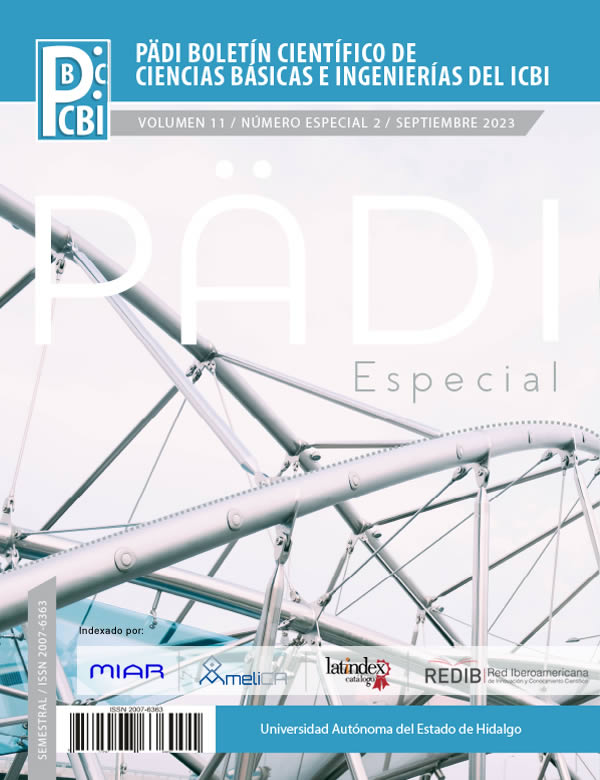Machine vision system for the evaluation of cherry coffee
Abstract
Product quality is a critical factor in agricultural industry because it greatly impacts its market value and refers to how well a product satisfies customer needs, serves its purpose, and meets industry standards. The quality of specialty coffee depends on specific characteristics that attract the consumer. This paper presents the design and construction of an artificial vision system for classifying specialty coffee cherries developed in Python with a Raspberry Pi 4. Image segmentation is based on two coffee parameters: color and size. HSV color space and image momentum theory are used to calculate the area in pixels of the coffee cherry. The artificial vision system developed in this work achieved an accuracy of 93.49% in the classification of the coffee cherry according to its level of ripeness and a precision of 82.6%, the developed algorithm was verified with a dataset that consisting of 169 images obtained using a SH003 camera. With the proposed system, it is possible to obtain more than 3,600 classified cherry coffee in one hour on average, an amount higher than that reported by expert classifiers in the region (2500 in an hour).
Downloads
References
Bazame, H., Molin, J., Althoff, D., & Martello, M. (2021). Detection, classification, and mapping of coffee fruits during harvest with computer vision. Computers and Electronics in Agriculture.
Castro, W., Oblitas, J., De-La-Torre, M., Cotrina, C., Bazan, K., & Avila-George, H. (2019). Classification of cape gooseberry fruit according to its level of ripeness using machine learning techniques and different color spaces. IEEE Access, 7.
Centro de estudios para el desarrollo rural sustentable y la soberanía alimentaria. (2018). El café en México diagnóstico y perspectiva.
Eustaquio, W., & Jr, J. (2020). Classification of Immature and Mature Coffee Beans Using RGB Values and Machine Learning Algorithms. International Journal of Emerging Trends in Engineering Research.
García, M., Candelo, J., & Hoyos, F. (2019). Quality and defect inspection of green coffee beans using a computer vision system.
González, R., & Woods, R. (2018). Digital image processing (Pearson (ed.); 4th ed.).
Lal, H., & Fukai, H. (2022). Peaberry and normal coffee bean classification using CNN, SVM, and KNN: their implementation in and the limitations of Raspberry Pi 3. AIMS Agriculture and Food.
Marín, R. (2020). ¿Qué es OpenCV? Instalación en Python y ejemplos básicos. Revista Digital INESEM. https://revistadigital.inesem.es/informatica-y-tics/opencv/
Mery, D. (2015). Computer vision for X-ray testing. Imaging, system, image databases and algorithms. Springer.
Montes, N. (2015). Real-time classification of coffee fruits using FPGA. 91. http://www.bdigital.unal.edu.co/50617/
Moore, A. (2018). Python GUI Programming with Tkinter : Develop responsive and powerful GUI applications with Tkinter. 442.
SAGARPA. (2018). Café Mexicano: planeación agrícola nacional del 2017 al 2030. https://www.gob.mx/cms/uploads/attachment/file/256426/B_sico-Caf_.pdf
Sandoval, Z., & Prieto, F. (2007). Caracterización de café cereza empleando técnicas de visión artificial. Revista Facultad Nacional de Agronomía - Medellín, 60(2).
Shih, F. (2010). Image Processing and Pattern Recognition: Fundamentals and Techniques (IEEE (ed.)). John & Sons, Inc.
Susanibar, G., Ramirez, J., Sanchez, J., Ramirez, R., & Arroyo, D. (2021). Development of an automated machine for green coffee beans classification by size and defects. Journal of Advanced Agricultural Technologies, 8.
Copyright (c) 2023 Jordan Antonio Cruz-Morales , Joel Artemio Morales-Viscaya , Alejandro Israel Barranco-Gutiérrez, Agustín Leobardo Herrera-May , Adán Antonio Alonso-Ramírez, Rosa María Woo-García

This work is licensed under a Creative Commons Attribution-NonCommercial-NoDerivatives 4.0 International License.













